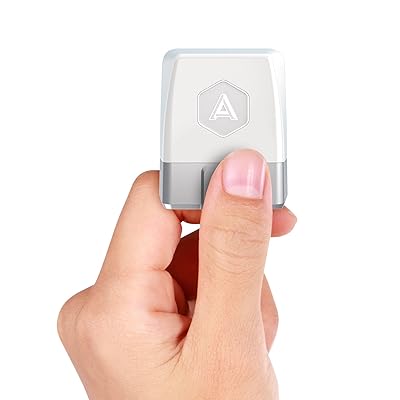The Automatic and the Zubie and How They Can Capture More Value
These two companies have the potential to make a great deal of money from their products' data.

![]()
One of the most exciting parts of the Internet of Things is how it allows individuals to analyze their own data. Just as the first personal computers improved people’s abilities to better process data, devices such as the Automatic car adapter and the Zubie give car drivers the ability to do their own diagnostics on their automobiles. Both of these devices work by putting them in the OBD-II slot in any car made since 1996 (http://www.obdii.com/background.html). Once the device has been installed and linked to an app on your phone, you can use your connected car adapter and your phone’s GPS to measure and analyze your car’s data. Zubie in particular uses three categories to explain its device’s capabilities, many of which are also found on the Automatic: Protect (monitoring performance and alerting the user to potential problems), Detect (engine and battery diagnostics along with roadside assistance), and Locate (live mapping which can help you find your car, tagging for expense reasons, alerting when family and friends come around, and allowing one to check if the car is at the same place you left it). Some of these devices diverge further, with the Zubie giving people a chance to “Save” through a “perk” program and the ability to find cheap gas stations (http://zubie.com/features/). Beyond those features, these dongles offer many useful services, such as the ability to measure how much gas every driver of the car uses, compare and contrast the driving habits of a “fleet” of company cars, and the ability to call for emergency assistance if the phone’s GPS (in the Zubie’s case) senses that you are in an accident. Most importantly, these types of devices allow people to discover potential problems- such as a loose gas cap or an oil problem- so they can either go to a licensed mechanic or try to fix it themselves before the problem manifests itself. The Automatic in particular lists a number of “well-reviewed mechanics” nearby if it is particularly serious (https://www.automatic.com/features/).
These devices are platforms as well as products. For instance, the IFTTT (If This, Then That) app on both platforms allows you to set up certain “recipes” to occur whenever your car is turned on or off, if you get or clear a check engine light, and arriving or leaving from a set destination. One can use this capability so that one can connect to one’s Nest so that the thermostat can heat up when the car gets close to one’s home. Between the product’s capabilities and the potential for new apps, one can see that the companies can do well by selling the product and its apps. What neither of these companies say they have, however, is a plan to make money off of the data they get from these devices.
As of yet neither of the companies behind these devices are talking about how they can use the data they get from their products to improve their revenue streams. The Automatic is sold for $99.95 and does not have any subscription service while the Zubie is $99.95 per year and it is unclear if either of them offer “paid” apps. If you ask Zubie if it shares any of its data with other companies then it will assure you that it does not share your data with anyone without your consent. Zubie does offer its drivers the ability to share their data with Progressive to earn a chance at car insurance discounts (https://www.progressive.com/newsroom/article/2014/september/zubie/) and partners with other groups such as AutoNation as well (http://techcrunch.com/2015/07/15/connected-car-company-zubie-rolls-out-an-api-for-the-internet-of-cars). USAA, the lead investor of Automatic’s Series B’s funding round, is an insurance company that may see potential in Automatic’s collection of data (http://techcrunch.com/2015/06/25/usaa-leads-24-million-round-for-connected-car-platform-automatic/).
They do not have to share their data to make money; they can make plenty more if they use their data to improve their products. Such companies have access to the location of the cars that use their products, the car’s status, how much different people share cars, and so more even if the data is kept anonymous. While they do not share data, they can make conclusions about what programs it wants other companies to make for their devices. For instance, if Automatic notices that some of its drivers like to drive for fun, it can develop an app designed to suggest scenic places to drive. Zubie may already be using its current data to realign its Zubie Perks program. The program currently offers discounts on insurance, oil changes, roadside service, and more. It could reshape its users attitudes by tying certain perks to finishing certain tasks, such as offering deals on festivals for those who drive to certain locations. While neither company has been too vocal about how they plan to use their data, they certainly have a number of options. Which direction they take is their decision.



What is the app’s user interface like? It is easy to use for someone that is not that tech/car savvy? Does the app provide next steps, like what to do when it detects an oil problem?
I’m afraid that question is better for those of us who currently drive cars, have one of the devices (these are just two companies which make these devices; I know more about them than their competitors and that is why they are highlighted here), and have discovered problems through their car adapter. https://www.youtube.com/watch?v=ebKUj6aK_q8 talks about how the Zubie compares different trips, error codes and what they mean, give actionable information, etc. They both offer next steps and offer tips on how to keep your vehicles in rude health. That much I know. I do not have any personal experience with the UI.